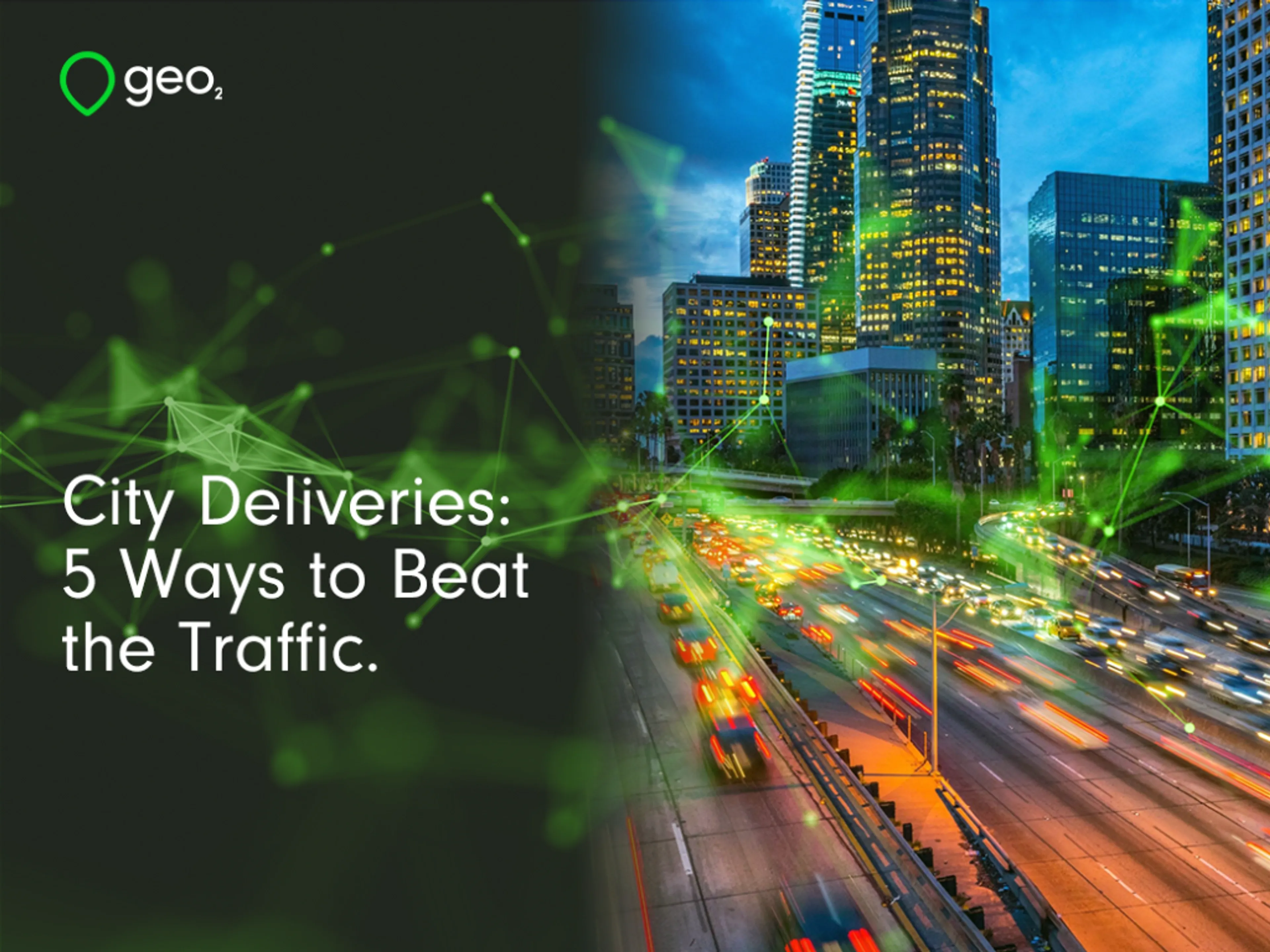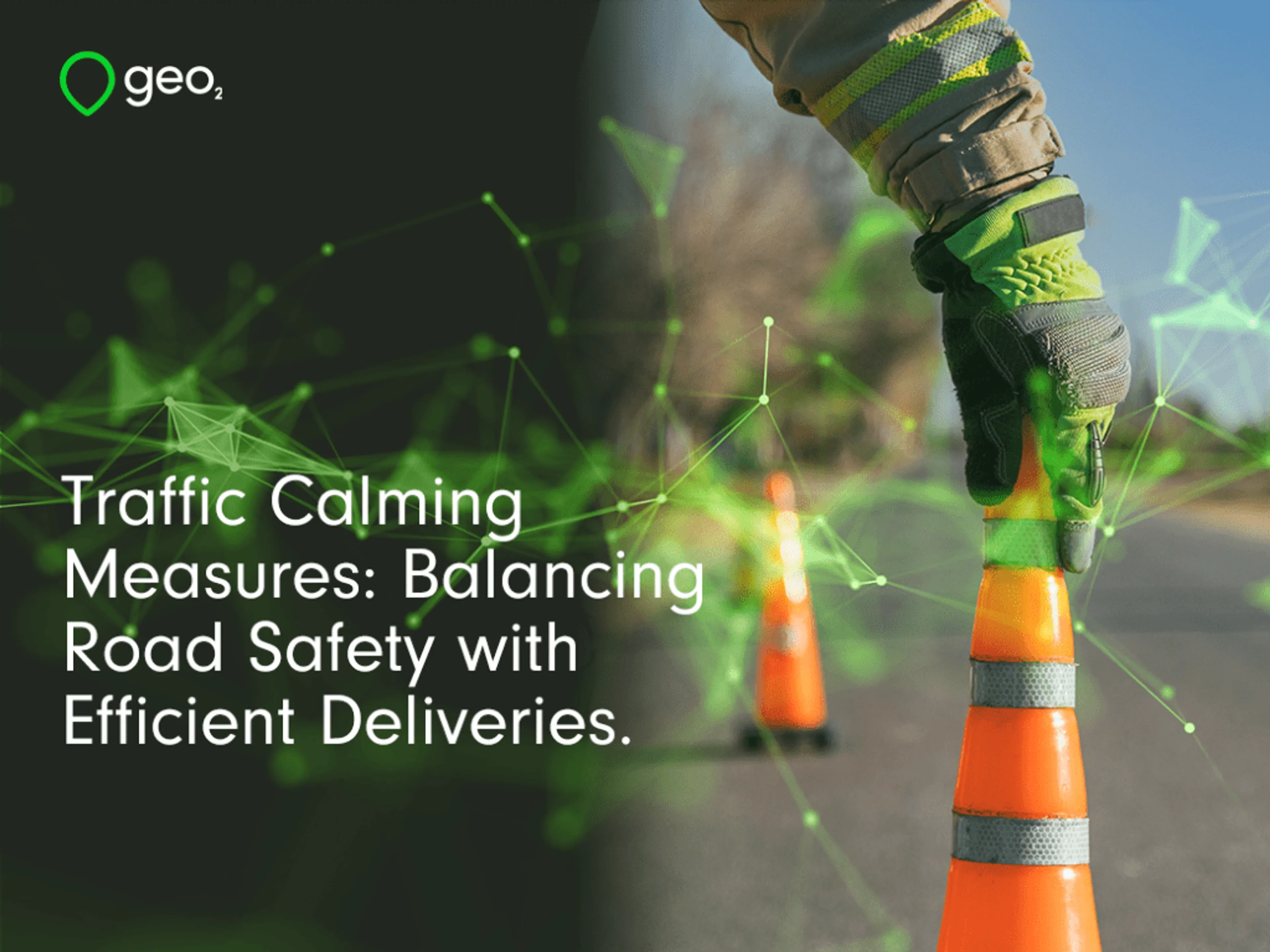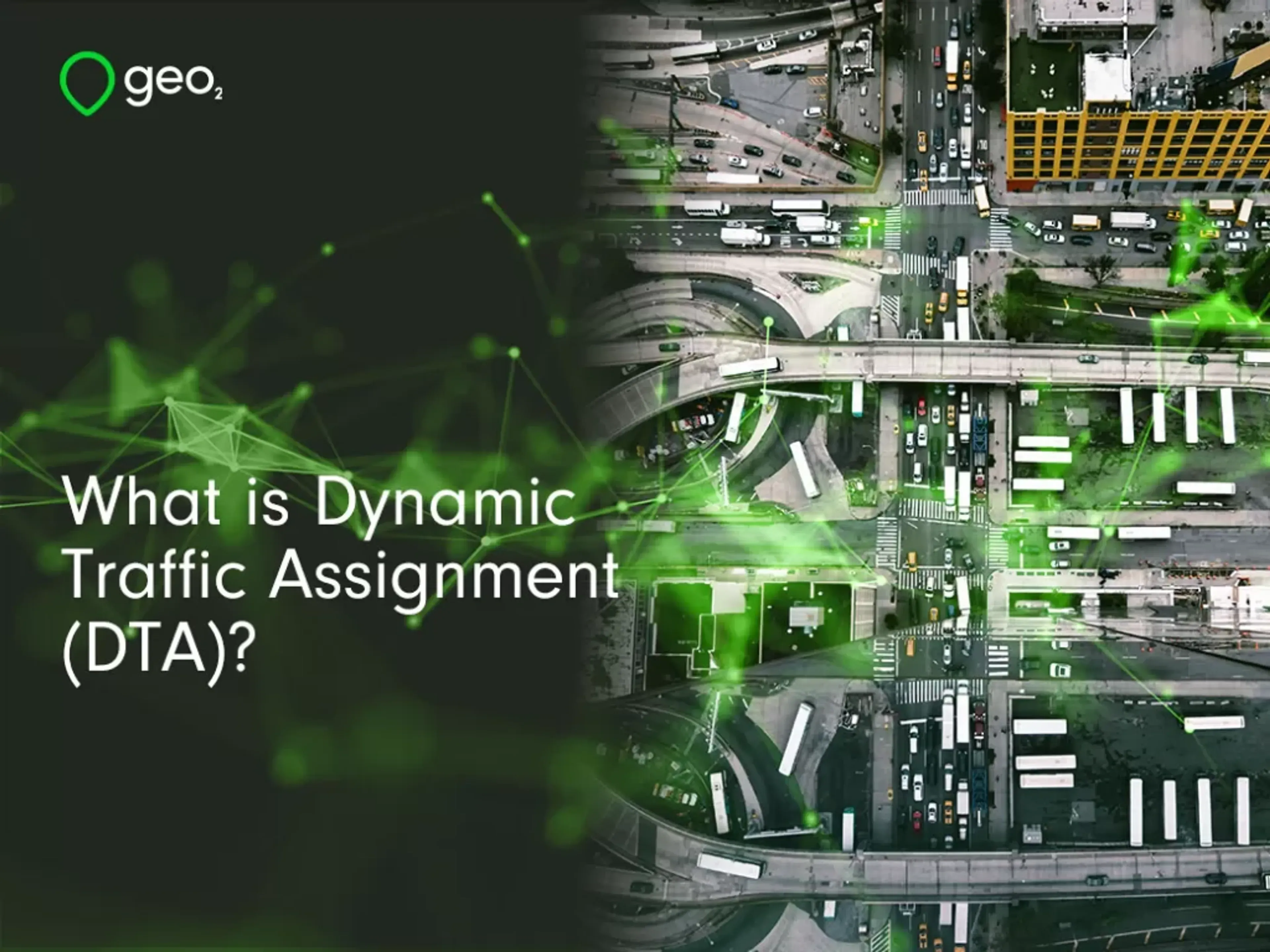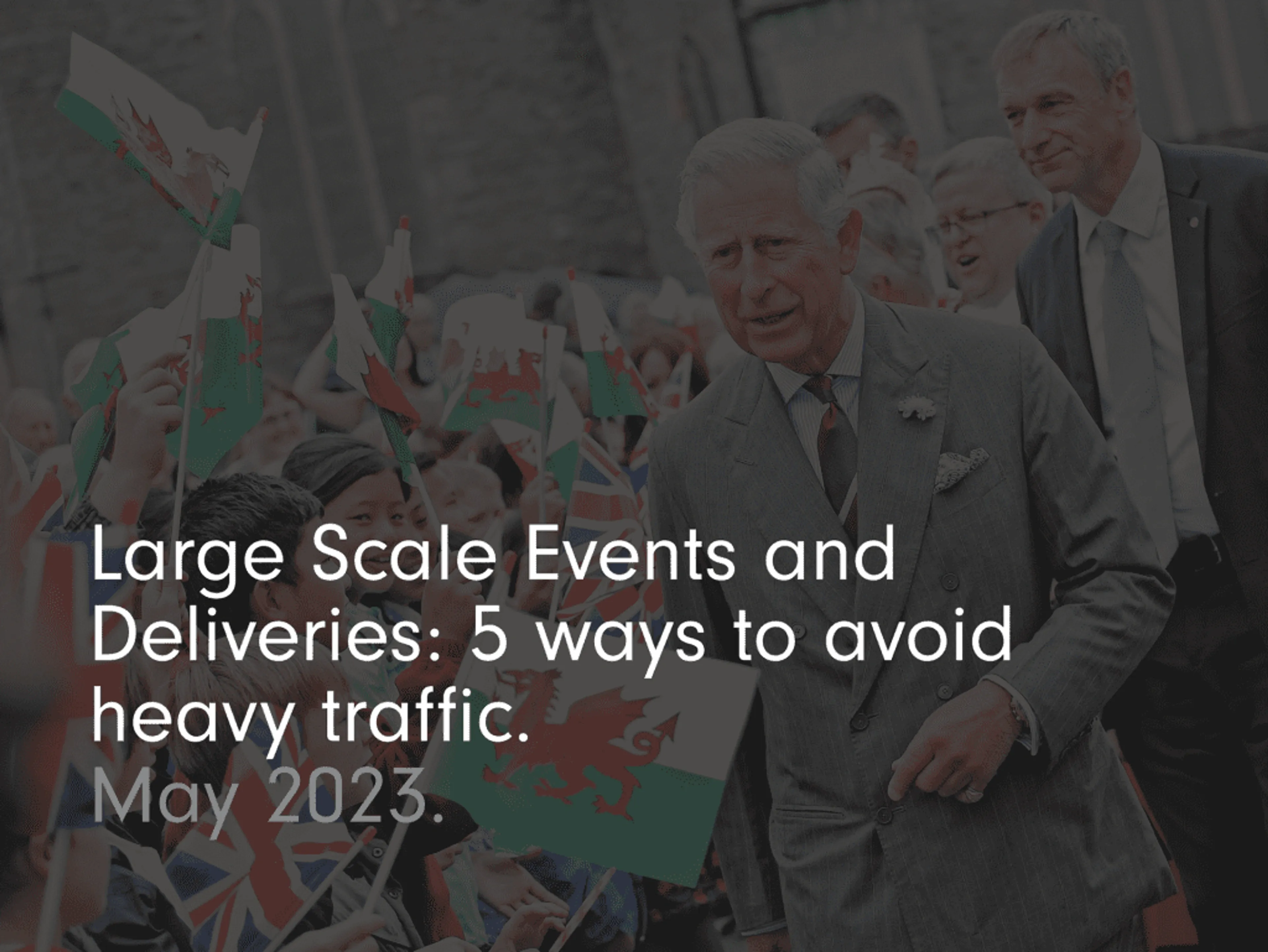The Challenges of Delivering During Large Events.
Large events often involve multiple road closures and diversions, which can be a route planning nightmare. Restrictions may be in place for several days. They can also change during the event. This can complicate your planning and make it difficult for your drivers to reach their destinations. Thousands of people may attend the event. This increases the likelihood of severe traffic congestion.
People will either be trying to get to the event, or find alternative routes to avoid the event. Events may have limited access points and security measures. This can slow things down as credentials are checked and vehicles are turned away.
If you have regular delivery schedules, these can be severely disrupted at times. Your regular customers will still expect you to deliver to them, so you will need to find ways to successfully manage that.
Aside from your scheduled deliveries, you may also notice increased delivery demand due to the event itself. During major public and private events, local restaurants, shops and bars may require extra deliveries to ensure sufficient stocks to cater for increased footfall. Or those staging the event may need last-minute supplies or replacement goods.
To cope with traffic and disruptions, you need to build contingency delivery routes and plans. It can be a time-consuming process if you need to manually route around road closures and changes, plus then spend time briefing each driver on their rescheduled itineraries.

The Benefits of Planning Delivery Routes Ahead of Time.
If you know about large events that are happening within your delivery area, you can plan ahead and build in extra time for affected deliveries, or route around them where possible. This can help you to meet your efficiency and productivity targets, especially if you can reduce unnecessary fuel consumption.
Planning alternative routes ensures your drivers aren’t needlessly sitting in traffic or taking longer diversions than may be necessary.
Optimising routes reduces fuel consumption, too. Plus, you won’t need to rely on your drivers to try to figure out the best routes themselves. Planning in advance helps you deliver on time and keeps your customers happy.
You want to stick to your delivery promises even in the face of large-scale event disruptions. Meeting customer expectations by providing accurate delivery times and limiting the need to reschedule deliveries, can maintain customer satisfaction levels.

Tips for Planning Delivery Routes During Large Events.
With the right strategies and tools in place, it's possible to effectively plan delivery routes during large events. Here are some tips and best practices to help.
1. Anticipate Road Disruptions.
A critical part of vehicle route planning is to anticipate road disruptions. Road closures and diversions have to be approved in advance, so the information is readily available. For example, government agencies provide details of planned road closures in England, Wales, Scotland and Northern Ireland. You can also check local council websites or subscribe to their updates.
2. Deliver Outside of Peak Times.
For large events with multiple road disruptions, you may prefer to schedule deliveries outside of peak times. The London Marathon affects hundreds of roads in the capital. However, after a certain time, the roads reopen. It is possible to achieve all your deliveries in cases like this. You can schedule some or all of the day's deliveries for the evening.
3. The Power of Automation with a TMS.
A transport management system (TMS) can automate planning. This can reduce the amount of time needed for planning routes that include diversions, closed roads, and busy areas. Instead of manually plotting routes on Google Maps that may add up to several hours’ work, you can plug in affected roads and a TMS will route around them.
Not only does a TMS do it for all your drivers and routes in a matter of just minutes, but it will also optimise the routes further to limit time or minimise fuel – according to your choice – and it can assign routes to the best-located drivers or best-suited delivery vehicles.
4. Real-Time Dynamic Route Optimisation.
A TMS that receives live traffic data can help even more by dynamically adjusting routes to avoid unexpected blockages or delays. You may already map out routes around events, hoping to save your drivers some time. But the obvious route is not always a sure thing as any number of other factors can affect traffic.
For example, you may have carefully planned your summer routes around Wimbledon, considering any closures or roads that are likely to be more busy than usual due to the tennis tournament. But an unexpected accident on another major road may have a knock-on effect on the whole area, causing widespread gridlock.
Despite your well-planned route, your delivery driver will get stuck in traffic and the customer’s order will be delayed.
Using dynamic routing and based on GPS data and live traffic conditions, the route can be amended in real-time, ensuring your driver can make it through more quickly.
5. Keep Customers Informed.
Finally, it is considered best practice to maintain communication with your customers, providing updates on delivery status, advising of any delays and keeping them informed of any changes to their delivery schedule. This can be done using notifications and live tracking functionality.
This transparency helps to build trust and manage customer expectations. Your customer may not be happy that their order is going to be two hours late, but they will be happier about it if you advise them in advance, than if they aren’t told at all.

The Road to Success.
The road to success begins with proactive planning. Planning your delivery routes ahead of time is vital if you want to maintain service levels during large events. By anticipating potential challenges, such as road closures, heavy traffic and security measures, you can optimise your routes and make it through the congestion.
You may not be reading this in time to plan for the Coronation or the Eurovision Song Contest, but you can stay ahead of the game when it comes to other events by investing in the right tools and technologies.
A route planner with dynamic scheduling, like Geo2, can ensure you still make your deliveries, even in the face of road closures and unexpected traffic issues. Start your free trial or to find out more about how Geo2 can save you time, fuel and money.
Related posts

City Deliveries: 5 Ways to Beat the Traffic
Traffic congestion is a real hindrance for city delivery drivers and courier services. Drivers need to minimise the amount of time they spend in traffic to ensure on-time deliveries and great customer service. Overcoming heavy traffic and navigating through diversions and road closures takes effort and requires a lot of patience. But there are also some additional tactics that can help beat the city traffic and deliver on time.

Traffic Calming Measures: Balancing Road Safety with Efficient Deliveries.
Traffic calming measures are essential for reducing vehicle speeds and enhancing road safety. Delivery drivers navigate Britain's roads daily, so it's important for them to understand traffic calming measures and how they can impact driving routes and delivery times. Here, we examine the reasons why traffic calming measures are implemented, the various forms they take and how you should drive in areas that have them.

What is Dynamic Traffic Assignment?
As urban areas continue to grow, it becomes increasingly challenging to manage traffic efficiently. This is the case not just for city planners, but also for businesses that rely on making timely deliveries by quickly navigating through traffic jams, diversions and accidents. Here, we look at a key modelling aspect that helps maintain efficient traffic flow on our roads – dynamic traffic assignment. We explain the significance of dynamic traffic assignment and how it contributes to the potential for more efficient routing, reduced delays – and ultimately, faster parcel deliveries.
